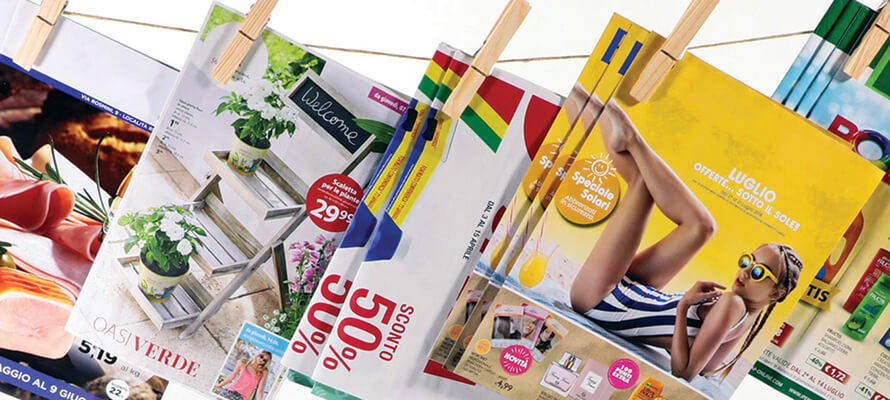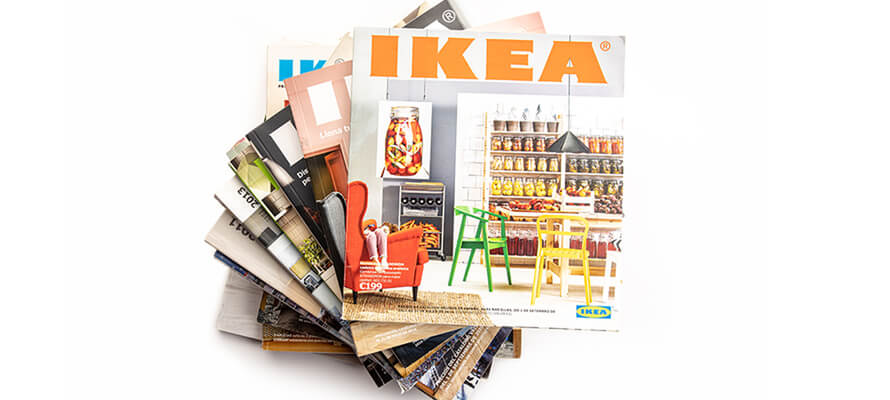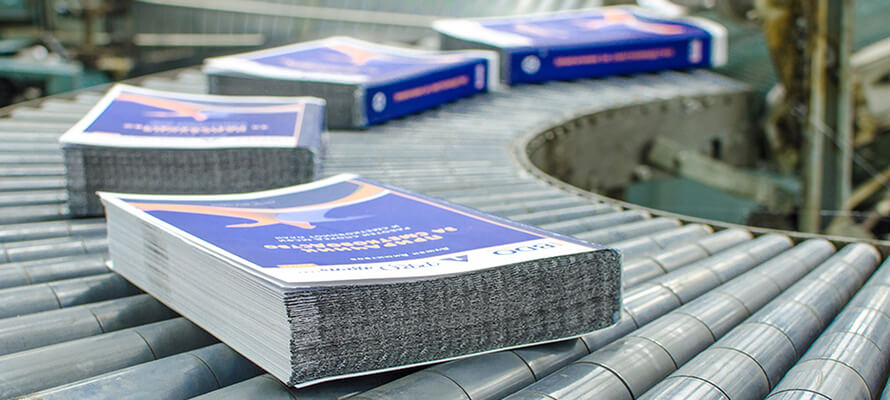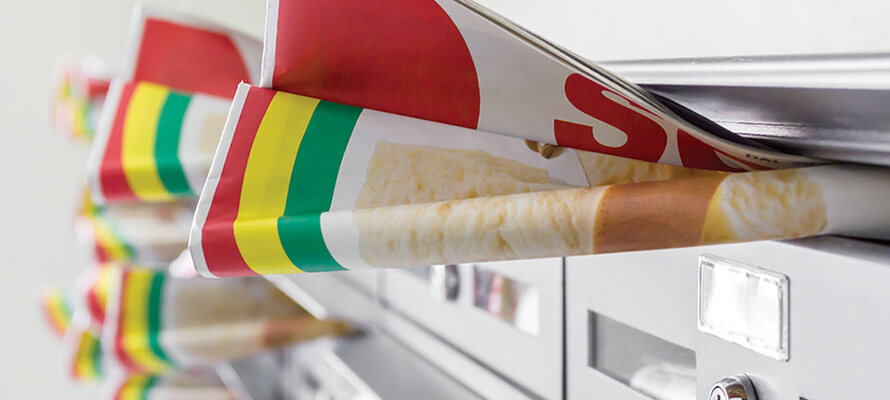Commercial printing and direct mailing - the voice of the brand
By Enrico Barboglio | On PRINTLovers 100
Commercial printing
It originated as a segment of printing applications that aim to sell something and be used as marketing tools. It should follow the evolution that marketing itself goes through according to social changes, demand, and the use of available technologies. Flyers, posters, catalogues, and Illustrated brochures are part of the history of commercial printing applications.
The history of flyers goes back a long way. And we like to remember how they were used for more than product marketing. It was the morning of 9 August 1918. Six single-seater biplanes and one two-seater (on which D'Annunzio himself sat) SVA entered the airspace of the capital of the Austro-Hungarian Empire, Vienna. From the sky, thousands of leaflets began falling on the heads of the Viennese, on which two different Italian propaganda messages were written celebrating the tricolore and urging the Austrians to stop fighting and surrender. The First World War was coming to an end.
Leaflets have always played a central role in communication, advertising and propaganda. The evolution of printing technology then allowed them to be developed in response to marketing needs. And so, flyers and posters have evolved to be tools for applying emerging marketing trends—personalisation and, more recently, multi-channelling.
Flyers and retail
The latter considerations apply mainly to the ‘retail catalogues': the large-scale flyers which have accompanied the retail trade since the 1970s. They are communication tools suffering the shockwave of digital technology, but they still enjoy a certain affection. According to research (Format Research for RGR comunicazione), more than a quarter of people attending their usual retail outlet would decrease their frequency of visits if they did not receive the flyer with the offers in their postbox.
The 'resilience' of this form of communication linked to the flyer is also due to the innovations that the various players are introducing to the market.
On the personalisation front, there are several examples from the retail world. Personalisation means printing specific content on the individual flyer related to the characteristics or needs of the person who will receive it, thus generated based on the recipient's knowledge. In the retail sector, this can happen thanks to analysing and managing the large amount of data collected through loyalty cards. Digital printing, combined with the ability of a resource skilled in data science, makes it possible to create leaflets with discount proposals on products that are precisely those in the shopping note of the recipient of the message—knowing their passions, buying habits, and available budget.
The use of multichannel offers further opportunities for the flyer. Volantino (Flyer) 4.0 is a project recently created by a major national printer. It is a solution that combines paper with the advantages of digital, allowing the effectiveness of promotions to be increased by being able to measure them precisely and in real time. The paper flyer in the postbox contains a QR code that gives the recipient access to exclusive coupons, not among the offerings on the inside pages, which are reserved for the sole use of the QR code and will be delivered to the customer by email.
Catalogues
Catalogues, meaning volumes presenting the products of a particular manufacturer or department store, gained popularity in the 1950s, mainly linked to the direct mail phenomenon. Today, the world of printed catalogues suffers from competition from digital communication but also seems capable of a new lease of life. This is the case especially by focusing on catalogue editions that no longer display the entire offering (which can be found on the Internet portal) but become 'specials' for particular occasions (see Amazon, which for Christmas sent ad hoc catalogues to families with children of Father Christmas gift-giving age).
There are several characteristics on which catalogue printing has focused over the years: price competitiveness or, on the contrary, high quality for fashion and luxury, environmentally friendly production and materials and, again, innovative printing technologies from digital to UV and UV-led offset printing.
Postal paper communication
This type of communication is entrusted to a written or printed product and delivered from the sender to the recipient via a carrier typically referred to as a postal carrier. There are actors designated to deliver postal products (the so-called DPOs or Designated Postal Operators); once, they were monopolists in providing the service but are now included in the context of liberalisation.
Postal services have been the business communication channel between companies and consumers or the channel through which public administrations, banks, and utilities have communicated on a daily basis with their users/customers, making up that market segment known as Business Communication. This market has been significant in the printing industry because it has been the driving force behind the development of innovative variable data printing solutions, thanks to digital printing technologies. Business communication, which translates into bank statements, bills, invoices, or even fines, injunctions, and tax bills, has therefore been the main reason for the deployment of high-production digital printing systems, first with laser technology in black and white, then in colour, then with inkjet technology. Italy has been a pioneer in installing these high-volume production digital printing systems, with many printing service providers able to grow and innovate, becoming international leaders.
Today, the business communication market (and therefore, these players called printing service providers or PSPs) is under heavy attack from e-substitution. Digital communications are gradually replacing a large part of paper-based communication volumes, even though much research shows that adding communication channels (the so-called omnichannel) is the real mantra for effective consumer marketing.
Companies such as PRT Group or Rotomail, forerunners in these markets for direct mail and business communication printing, have long since identified the provision of advanced digital services upstream and downstream of delivery as the most suitable solution for adding value to printing and envelope-stuffing activities as well.
Mailing, therefore, is a tool that still demonstrates good effectiveness but needs particular attention, especially from the delivery point of view. This link in the chain has always been the Achilles' heel for our market due to the historical inefficiencies of the designated postal operator (Poste Italiane) and its reluctance and slowness to innovate its delivery services, even in the face of precise requests from operators, who are ready to modify their flows to create efficiency and savings. This is especially so from an environmental point of view if new methods and rules were to be developed, which today face bureaucratic obstacles in their implementation. These are barriers that we hope will soon be overcome.






